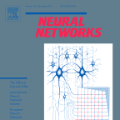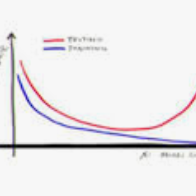Synthetic data is a scalable alternative to manual supervision, but it requires overcoming the sim-to-real domain gap. This discrepancy between virtual and real worlds is addressed by two seemingly opposed approaches: improving the realism of simulation or foregoing realism entirely via domain randomization. In this paper, we show that the recent progress in neural rendering enables a new unified approach we call Photo-realistic Neural Domain Randomization (PNDR). We propose to learn a composition of neural networks that acts as a physics-based ray tracer generating high-quality renderings from scene geometry alone. Our approach is modular, composed of different neural networks for materials, lighting, and rendering, thus enabling randomization of different key image generation components in a differentiable pipeline. Once trained, our method can be combined with other methods and used to generate photo-realistic image augmentations online and significantly more efficiently than via traditional ray-tracing. We demonstrate the usefulness of PNDR through two downstream tasks: 6D object detection and monocular depth estimation. Our experiments show that training with PNDR enables generalization to novel scenes and significantly outperforms the state of the art in terms of real-world transfer.
翻译:合成数据是人工监督的一种可伸缩的替代方法,但它需要克服虚拟和现实世界之间的光化领域差距。虚拟和现实世界之间的这种差异通过两种看起来相反的方法来解决:通过域随机化来改进模拟的现实主义或完全排除现实主义的现实主义。在本文中,我们表明神经元化的最近进步使得一种新的统一方法得以实现,我们称之为光-现实神经-神经-内地随机化(PNDR)。我们建议学习一种神经网络的构成,这种网络作为物理学的射线追踪器,单独从现场几何中产生高质量的图像。我们的方法是模块化的,由不同的材料、照明和显示的神经网络组成,从而能够在不同的管道中随机化不同的关键图像生成部件。经过培训后,我们的方法可以与其他方法相结合,并用来在网上产生光-现实化图像增强,而且比传统的射线测量效率要高得多。我们通过两个下游任务(6D对象探测和单向深度估计)来证明PDR的效用。我们的实验表明,用PDR的训练能够向新的场景面进行概括化,并大大超越了艺术的状态。



